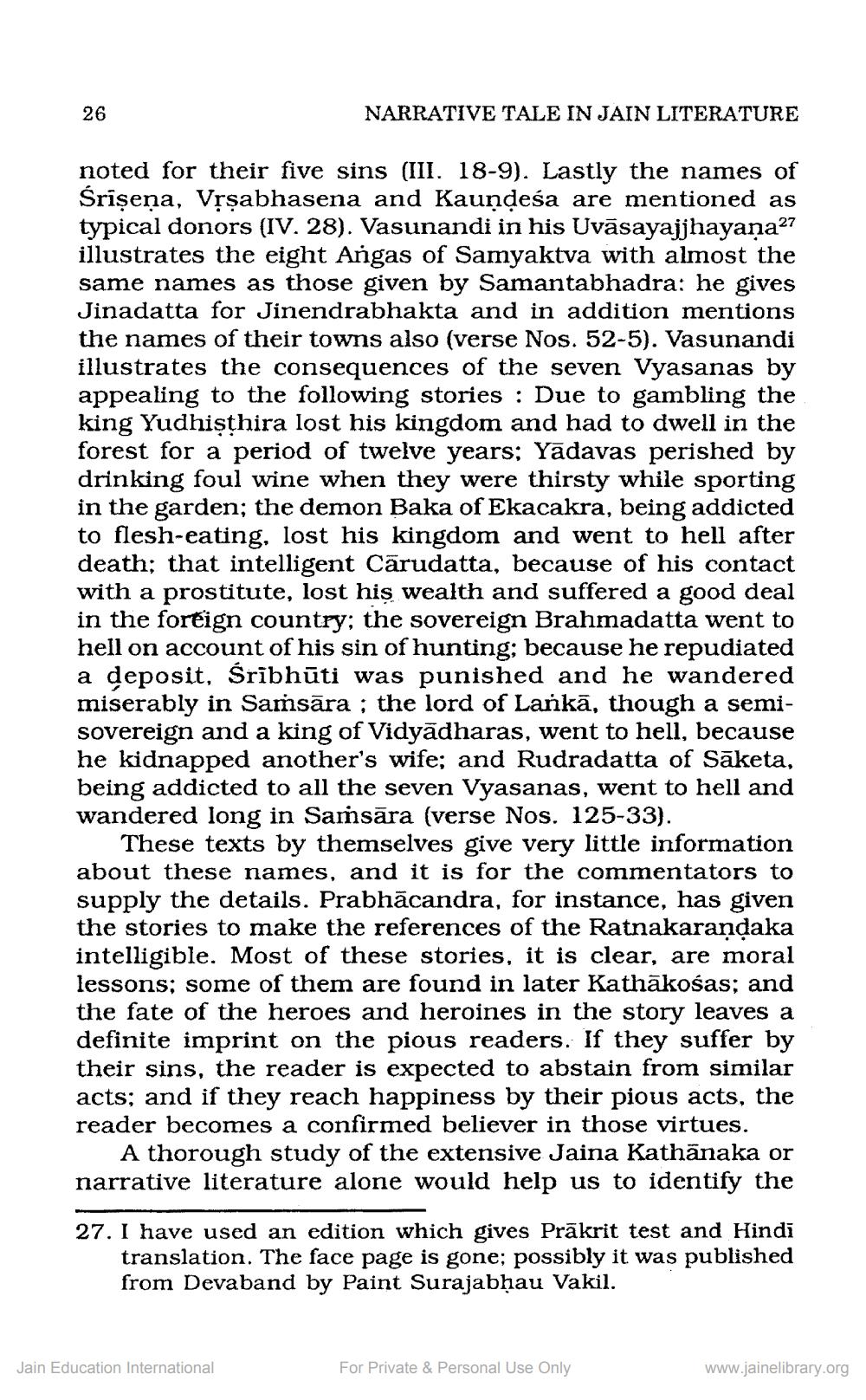________________
26
NARRATIVE TALE IN JAIN LITERATURE
noted for their five sins (III. 18-9). Lastly the names of Śrīşena, Vrşabhasena and Kaundeśa are mentioned as typical donors (IV. 28). Vasunandi in his Uvāsayajjhayana27 illustrates the eight Angas of Samyaktva with almost the same names as those given by Samantabhadra: he gives Jinadatta for Jinendrabhakta and in addition mentions the names of their towns also (verse Nos. 52-5). Vasunandi illustrates the consequences of the seven Vyasanas by appealing to the following stories : Due to gambling the king Yudhisthira lost his kingdom and had to dwell in the forest for a period of twelve years; Yādavas perished by drinking foul wine when they were thirsty while sporting in the garden; the demon Baka of Ekacakra, being addicted to flesh-eating, lost his kingdom and went to hell after death; that intelligent Cārudatta, because of his contact with a prostitute, lost his wealth and suffered a good deal in the foreign country; the sovereign Brahmadatta went to hell on account of his sin of hunting; because he repudiated a deposit, Sribhūti was punished and he wandered miserably in Saṁsāra ; the lord of Lankā, though a semisovereign and a king of Vidyādharas, went to hell, because he kidnapped another's wife; and Rudradatta of Sāketa, being addicted to all the seven Vyasanas, went to hell and wandered long in Samsāra (verse Nos. 125-33).
These texts by themselves give very little information about these names, and it is for the commentators to supply the details. Prabhācandra, for instance, has given the stories to make the references of the Ratnakarandaka intelligible. Most of these stories, it is clear, are moral lessons; some of them are found in later Kathākošas; and the fate of the heroes and heroines in the story leaves a definite imprint on the pious readers. If they suffer by their sins, the reader is expected to abstain from similar acts; and if they reach happiness by their pious acts, the reader becomes a confirmed believer in those virtues.
A thorough study of the extensive Jaina Kathānaka or narrative literature alone would help us to identify the
27. I have used an edition which gives Prākrit test and Hindi
translation. The face page is gone; possibly it was published from Devaband by Paint Surajabhau Vakil.
Jain Education International
For Private & Personal Use Only
www.jainelibrary.org




